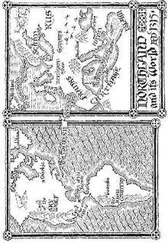Cautiously, tentatively, the ships from the Moon crept towards the ruin of Earth.
…And, twenty years beyond the Bottleneck:
In the confines of Sagan’s airlock Nadezhda put on her gloves and snapped home the connecting rings. Then she lifted her helmet over her head.
The ritual of the suit assembly checklist was oddly comforting, a litany now decades old: in fact, almost unchanged from the routines endured by the original astronauts from Earth.
But the Sagan was no dinged-up low-Earth-orbit space truck, and right now Nadezhda was far from home.
She felt her heart hammer under her suit’s layers.
Jean Massie, on the hab module’s upper deck, was monitoring her. Nadezhda, you have a go for depress.
Nadezhda heard a distant hiss. “Let’s motor.”
She twisted the handle of the outer airlock hatch and pushed.
Nadezhda Pour-El Meacher Dundas gazed out into space.
She was looking along the length of the Sagan’s hab module. It was a tight cylinder, just ten yards long and seven wide, home to four crew for this six-month jaunt. The outer hull was crammed with equipment, the sensors and antennae clustered over powder-white and gold insulating blankets. The flags of the contributing lunar nations and agencies were here: NASA-L, the Russians, the Europeans, the Chinese, the Japanese, and the star-in-crescent flag of the Federal Republic of the Moon itself. At the back of the hab module she could see the bulging upper domes of the big cryogenic fuel tanks, and when she turned the other way there was the emergency return module, a capsule stuck sideways under the canopy of its big aerobrake.
The whole thing was just a collection of cylinders and boxes and canopies, thrown together as if at random. She knew every cubic inch of it.
She moved out through the airlock’s round hatchway.
There was a handrail, and two slide wires that ran the length of the curving hull, and Nadezhda tethered herself to the wires. It was a routine she’d practised a hundred times in the sims at Clavius and New Houston, and a dozen times in lunar orbit. There was no reason why now should be any different.
No reason, except that the Moon wasn’t where it should be.
In lunar orbit, the Moon had been a bright, curving carpet beneath her all the time. But out here, the Moon was all of five million miles away, reduced to a blue button three or four arms-lengths away. And Nadezhda was suspended in a huge three-hundred-sixty-degree planetarium just studded with stars, stars everywhere…
Everywhere, that is, except for one corner of the sky blocked by a vaguely elliptical shadow, sharp-edged, one rim picked out by the sun.
It was Icarus: a near-Moon asteroid, Nadezhda’s destination.
When she was selected for this mission, Nadezhda had studied the history of the Earthborn astronauts, right back to the beginning, Yuri Gagarin and Alan Shepard in their tin-can spaceships. She’d learned she had at least one thing in common with them.
She supported the objectives of the mission, of course. She had trained up on the science of Icarus, on near-Earth objects in general. She had trained up on the Moonseed, on the various coexistence and communications and exploitation schemes that had been proposed. She was interested in the science, the future of mankind, all of that stuff. Of course she was. She wouldn’t have come so far otherwise.
But what really motivated Nadezhda, here and now, five million miles from home, was not screwing up.
Every astronaut, right back to the beginning, had felt the same, she suspected. Don’t screw up. Finish the checklist, smile for the cameras. Because not screwing up was the only way to get on another flight.
Maybe that particularly applied to her, the first lunar-born deep-space astronaut, on this NASA-L mission. If she screwed up, the Earthborns would have a field day, and it would be a long time before she, or another Moonborn, would get another chance.
Of course, inevitably, their time would come.
All lunar citizens were astronauts anyway. The Earthborns just didn’t see that.
Under the big glass domes at Clavius and Tycho, human-powered flight was the most popular sport: thick air, low gravity…Nadezhda had grown up in a world where children flapped back and forth all the time like bony chickens, learning the rudiments of three-dimensional navigation and aerodynamics as soon as they were born.
And, on the Moon, everyone flew in space. You could reach orbit with a back yard rocket motor smaller than a car engine; even Armstrong and Aldrin had proved that. People went through sub-orbital lobs longer than Alan Shepard’s just to go shopping. Lunar inhabitants were nature’s astronauts.
But not to those Earthborn mission planners in New Houston, however.
She supposed it was pride.
Well, it would pass, with time. After all, when the present generation had retired, there would be no more Earthborn, ever.
So she put up with their prejudices, and waited for her own time to come, and listened to their stories — endless stories, five billion of them — tales of the time before the Bottleneck, of bravery and disaster and displacement — of unlikely acts of heroism linked with names in her own family lines — and of even earlier times, of an incomprehensible, vanished world, when everyone believed the Earth would forever be their home, as it always had…
But she didn’t want to wait for dead men’s shoes.
She pulled herself tentatively along the slide wire, and made her way to the PMU station, on the starboard side of the hab module. The Personal Manoeuvring Unit was a big backpack shaped like the back and arms of an armchair, with foldout head- and leg-rests on a tubular frame. Nadezhda ran a quick check of the PMU’s systems.
Then she turned around, and backed into the PMU.
“Sagan, Nadezhda,” she said. “Suit latches closed.”
Copy that.
She pulled the PMU’s arms out around her and closed her gloved hands around the hand-controllers on the end of the arms. She unlatched the folded-up body frame. She rested her neck against the big padded rest, and settled her feet against the narrow footpads at the bottom of the frame, so she was braced. Today’s EVA was just a test reconnaissance, but a full field expedition to Icarus could last all of eight hours; the frame would help her keep her muscle movements down, and so reduce resource wastage.
Nadezhda released her tethers. A little spring-loaded gadget gave her a shove in the back, gentle as a mother’s encouraging pat, and she floated away from the bulkhead.
…Suddenly she didn’t have hold of anything, and she was falling.
She had become an independent spacecraft. The spidery frame of the PMU occulted the dusting of stars around her.
She tested out her propulsion systems.
She grasped her right-hand controller, and pushed it left. There was a soft tone in her helmet as the thruster worked; she saw a faint sparkle of exhaust crystals, to her right. In response to the thrust, she tipped a little to the left.
When she started moving, she just kept on going, until she stopped herself with another blip of her thrusters.
She turned in space, and looked at the Moon. She pressed a stud on the side of her helmet, and the Moon’s image was magnified, so that its crescent filled her helmet. And the crescent’s edge was softly blurred by a band of light, which stretched part way around the darkened hemisphere.
Sparks crawled over the globe: ocean-going vessels, surface cars, low-orbit spacecraft. There were more lights, strung out in lines, on the darkened surface itself: towns and cities, outlining hidden continents. Buildings on the Moon were mostly made entirely of glass; lunar glass, manufactured from deep-lying dehydrated lunar ore, was incredibly strong. From space, all that glass made the cities bright.
Читать дальше
Конец ознакомительного отрывка
Купить книгу












